My relationship with books transcended from educational to intimate and personal the day I first read a rare unabridged edition of Anne Frank’s The Diary of a Young Girl. It had a paragraph which took me by surprise – not only because I noticed that it was omitted from the editions they taught us at school but also, because it was revealing, self-reflecting, and extremely relatable to me. She wrote about her feelings for her girl best friend, an uncontrollable desire to explore her own body and explicitly about her desires for women in general.
“After I came here, when I was just fourteen, I began to think about myself sooner than most girls, and to know that I am a ‘person.’ Sometimes, when I lie in bed at night, I have a terrible desire to feel my breasts and to listen to the quiet rhythmic beat of my heart.
I already had these kinds of feelings subconsciously before I came here. I remember that once when I slept with a girl friend I had a strong desire to kiss her, and that I did do so. I could not help being terribly inquisitive over her body, for she had always kept it hidden from me. I asked her whether, as a proof of our friendship, we should feel one another’s breasts, but she refused. I go into ecstasies every time I see the naked figure of a woman, such as Venus, for example. It strikes me as so wonderful and exquisite that I have difficulty in stopping the tears rolling down my cheeks. If only I had a girlfriend.”
In order to set out on a personal journey of exploring my own sexuality, it was necessary that I learnt from protagonists rooted in my own culture.
Anne Frank coming out as bisexual at fourteen made me believe that sexuality was not exclusively fathomable by the adult consciousness. Young women, too, were both equipped and allowed to dissect their desires irrespective of societal boundaries of morality. At an age and in an era, when my classmates would hit their menarche and mistake it for a ‘disease’ because no one ever talked to them about their own anatomy, sex education was too much to expect from parents who themselves were not sensitised. Only books seemed honest about the way they presented the world; unadulterated, blasphemous, morally diverse, and unapologetically beautiful.
Also read: Watch: 5 Indian Books With Queer Protagonists You Need To Read
In the world where social media has made it easy for confirmation bias to grow and fake news has made us go farther from the truth, texts have a bigger responsibility which is to allow, build, and defend the art of discourse. However, in order to set out on a personal journey of exploring my own sexuality, it was necessary that I learnt from protagonists rooted in my own culture.
These protagonists needed to have belonged to middle class religious families like my own in small towns where a couple was only allowed into hotel rooms if they were married, where the dignity of sexual harassment survivors was considered preserved if the victim married the oppressor rather than toiling for justice in the courts, where men had to prove their manliness at every stage in order to not be ‘humiliated’ by being called effeminate (since female was code-word for weak). In my search for meaning, I discovered these South Asian writers who wrote precious texts about love, gender, religion, and spirituality.
1. Devdutt Pattanaik
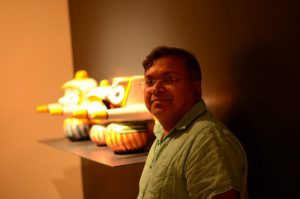
Image Source: Devdutt
While most of us believe that Hinduism has been liberal about homosexuality as understood from its fables and art, Devdutt Pattanaik’s essay “Did Homsexuality exist in ancient India?” shows us the other dimensions of the unexplored narrative. The mythologist who himself identifies as gay, writes,
“The Kali Yuga marks the final phase in the cosmic lifespan, the era before the flood of doom. Hindu scriptures state that in this age all forms of sexual irregularities will occur. Men will deposit semen in apertures not meant for them (Mouth? Anus?). According to Narada Purana: ‘The great sinner who discharges semen in non-vagins, in those who are destitute of vulva, and uteruses of animals shall fall into the hell ‘reto-bhojana’ (where one has to subsist on semen). He then falls into ‘vasakupa’ (a deep and narrow well of fat). There he stays for seven divine years. That man has semen for his diet. He becomes the despicable man in the world when reborn.’ Clearly an acknowledgement, but not acceptance, of homosexual conduct.”
He further mentions about the disdainful reference to male masseurs who indulge in oral sex in Kamasutra, about how reference but not acceptance to homosexual conduct does occur in many Dharmashastras, and the vehement disapproval of male or female homosexuality in Manusmriti which states, “If a girl does it (has sex) to another girl, she should be fined two hundred (pennies), be made to pay double (the girl’s) bride-price, and receive ten whip (lashes). But if a (mature) woman does it to a girl, her head should be shaved immediately or two of her fingers should be cut off, and she should be made to ride on a donkey.”
Pattanaik acknowledges that in Hindu texts, there is a degree of tolerance only when the act is expressed in heterosexual contexts (when men ‘became women’ in their desire for other men) and always within the limitations of the caste system and patriarchy.
2. Haroon Khalid
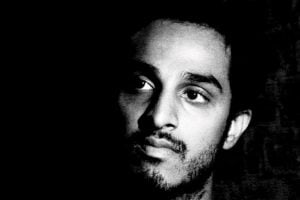
Image Source: Mid-Day
While Islam condemns homosexuality, Haroon Khalid’s analysis of the same sex references in Islamic Sufi Poetry makes existence and fulfilment look invincible in front of the social structures of gender and the futile debates on the naturality of sexual orientations.
He says that for Bulleh Shah, the rigid categories between religion, gender, and sexuality did not exist.
He says that for Bulleh Shah, the rigid categories between religion, gender, and sexuality did not exist. For example in the following verses he has no scruples in incorporating a Hindu deity into his Muslim ethos, blurring the distinction between Muslim and Hindu concept of God.
“Krishna plays the magical flute
O Ranjha with the flute –
O cowherd Ranjha!
You are in tune with all of us!
You make your delights
Chime with your consciousness
Krishna plays the magic flute”.
In other poems Bulleh Shah dissolves gender identities when he presents himself as a woman, appearing before her lover.
“Remembering Ranjha day and night
I’ve become Ranjha myself.
Call me Dhido Ranjha,
No more I be addressed as Heer.
I am in Ranjha and Ranjha is in me
There is no distinction left.”
Khalid also mentions the homoerotic references in Sufi poetry, like the love affair of prominent Sufi saint Shah Hussain with Hindu boy Madho Lal, of Sarmad Kashani and Abhai Chand, Khusro’s devotional poetry for Nizamuddin Auliya where he writes “Khusro has given himself to Nizam, you made me your bride when our eyes met.”
3. Vikram Seth
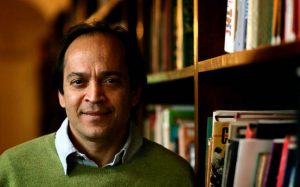
Image Source: India Today
In I Am Not A Criminal by Vikram Seth, the revered author views love from the prism of society and politics, and condemns the naivety of the hatred which underlies the interference in other’s social lives.
“Of all the cruelties that we as human beings can visit on one another, one of the most cruel is to say, You shall not love or make love with the person you love, not because of excessive youth or because of unwillingness, but because he or she comes from a different religion, a different caste, the same village, the same gender.I will break your legs, I will fling acid in your face, I will hang you from a crane, I will stone you to death.If the mob helps me, so much the better. If the law helps me, so much the better. If I can wrap myself in a flag, so much the better. If I can drape religion around myself, so much the better. But by one means or another, I will tear the two of you apart. It is fit and proper that I should do this.”
4. Hoshang Merchant
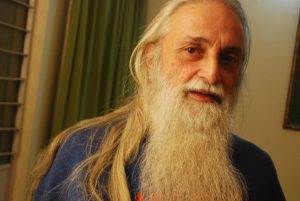
Image Source: Alchetron
In Hoshang Merchant’s Yaraana, Manil Suri and R.Raj Rao hilariously unfold the experience of being gay in modern Indian society. While Manil Suri throws light on the initial days of emergence of the gay community in Mumbai, the underground parties and discreet communities and AIDS seminars, Rao writes about the pressure on gay sons to get married to women (many of whom, end up doing it) and the isolation young students face in the college culture owing to their identities which is often looked as an aberration or some incomprehensible form of pathological promiscuity.
“Shantabai
who comes once a day
to wash your undies
goes many steps further.
She thinks
A man without wife and kids
Is cremated by the Bomabay Municipal Corporation
Upon death.
You wonder if she’s making a pass.”
-R.Raj Rao, Onions and Opinions
5. Sudhir Kakkar
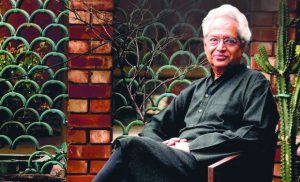
Image Source: Good Reads
Sudhir Kakkar’s The Analyst and the Mystic just like his other books like Intimate Relations and Shamans, Mystics and Doctors, explore gender and relationships from the perspective of spirituality. He observes that for a mystic or a saint, ‘enlightenment’ or coming in terms with themselves also means identifying and accepting the mannerisms or feelings of other genders in themselves, thus establishing they can feel exactly the latter do. According to him, the freeing of femininity from repression or disavowal in man and vice versa in a woman may be a great human achievement rather than an illness or a deviation.
Also read: Representation for Representation’s Sake: Queerbaiting Is Not Cool
“Ramakrishna’s open espousal and expression of his feminine identifications as a boy, however, also have to do with the greater tolerance of his community and its culture towards such identifications. I would say that the male-self part of Ramakrishna’s personality was split off in early childhood and tended to grow, if at all, rather slowly. In contrast, the female-self part of his personality dominated his inner psychic reality. His girl-self was neither repressed nor disassociated but could mature to an extent where psychically he could even possess female sexual equipment and enjoy female sexual experience.”
This is by no means an exhaustive or representative list. Suggestions to add to this list are welcome in the comments section.
About the author(s)
Bijaya Biswal is a 23 year old doctor who works for the upliftment of the culture of literature, films and art in Odisha. She has been also working with LGBTQIA+ rights, animal welfare, ecology and menstrual health.





Would have been nice to have at least one woman on this list – there are so many amazing queer writers and a website like FII especially should make the effort
Agreed, we will be more careful in future.